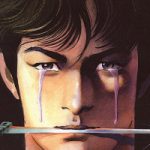Kibyōshi
Regions: Japan

Kibyōshi means a yellow cover, referring to a genre of Japanese picture books for adults, called ehon (lit, picture book) or kusazōshi (lit. casual book) in the later Edo period. The predecessor of kibyōshi were akabyōshi (red), kurobyōshi (black) and aobyōshi (blue). The adult picture books evolved from children’s picture books, reflecting the maturity of consumerism and Edo culture. Kibyōshi was only popular from 1775 to 1806 until gōkan (lit. combined volumes) with longer stories became prevalent.
Kibyōshi comprised written texts and pictures similar to manga, although generally without frames. The size of each volume was only 10 pages, printed on 5 sheets of paper approximately B6 in size. Some stories were published in several volumes, like sequential manga comics. Likewise, the price was generally low. More than 1,800 works appeared during the 30+ years. Major publishers such as Tsutaya Jūzaburō (1750-1797) were involved in kibyōshi. Circulation figures are unclear, however, Santō Kyōden’s works sold more than 10,000 copies when the population of Edo was considered to be over a million people.
The first kibyōshi were written in 1775by a story-teller and ukiyoe (woodblock prints) artist, Koikawa Harumachi (1744-1789). Titled Kinkin sensei eiga no yume (lit. Master Kinkin’s dream of prosperity), it used a Chinese tale known as the dream or pillow of Kantan (Handan), in which a young man experiences hardships and prosperity all in a brief dream and realises the vanity of pursuing prosperity. Harumachi’s kibyōshi depicts a young country man has a dream of quick prosperity and sudden loss while dozing off.
This short and playful fiction with illustrations typified kibyōshi, comically depicting people’s daily lives. With witty intertextualisation of classical stories, jocularity was embedded narratively and graphically to create intellectual challenges for adult readers. Dialogues were abundantly incorporated and some stories even included speech bubbles/ balloons. Some kibyōshi contained multiple frames on a page or picture, called komae (framed picture), to enhance the complexity of the scene and speed up the progression of the story. This is somewhat similar to manga, especially the use of irregular frames in shōjoor girl’s manga.
The best known kibyōshi author was Santō Kyōden (1761-1816), who was also a popular ukiyoe (woodblock prints) artist and writer of other genres, such as longer and more serious novels (gōkan). He wrote many sharehon or humoristic stories set in pleasure quarters (e.g.,Yoshiwara). However, in 1791, Kyōden was manacled for 50 days for breaching a ban on the publishing of sharebon. This demonstrated the dilemma authors and publishers faced between government pressures and commercial demand.
Despite the innocuous playfulness kibyōshi initially possessed, it grew more satirical of Japanese society, with its stories subject to government censorship particularly during the Kansei Reforms (1787-1793) led by Matsudaira Sadanobu aimed at enforcing literary and military arts. Kibyōshi were forced to change from humoristic, fantasy-like narratives to the serious and moralistic stories, e.g., tragic revenge stories. The format also changed from a collection of several thin books to a thick book to accommodate longer novel-like stories, ending the popularity of kibyōshi.
— Mio Bryce
Further Reading
- Kern, Adam L. Manga From the Floating World: Comic book Culture and the Kibyōshi of Edo Japan. Cambridge, Mass: Harvard University Asia Center. 2006. Print.
- Kern, Adam. L. “Manga versus Kibyōshi.” In A Comics Studies Reader.Edited by Jeet Herr and Kent Worchester, 236-243. Jackson: University Press of Mississippi. 2009.
- Marceau, Lawrence E. “Behind the Scenes: Narrative and Self-Referentiality in Edo Illustrated Popular Fiction.” Japan Forum, May ,21 :403-423. 2010. Print.


